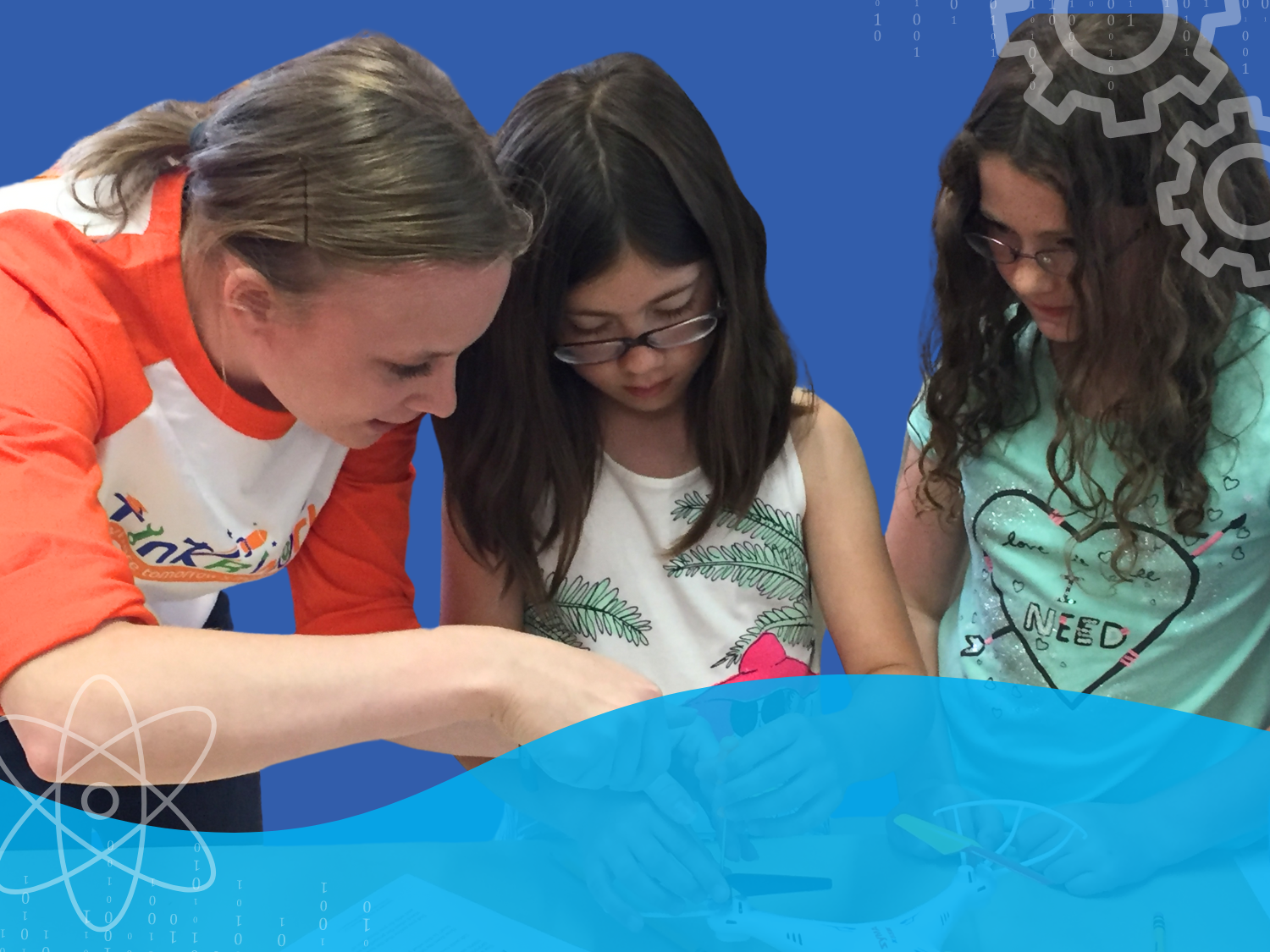For decades, the gender gap in STEM (science, technology, engineering, and math) has persisted, with girls and women vastly underrepresented in these fields despite showing equal aptitude. From an early age, girls express less interest in STEM careers, a trend that follows them into higher education and the workforce. According to a 2009 poll by the American Society for Quality, only 5% of girls between the ages of 8 and 17 expressed interest in pursuing a career in engineering, compared to 24% of boys. This is further highlighted by another poll where 74% of college-bound boys ages 13–17 said that computer science or computing would be a good college major for them, compared to just 32% of girls.
These numbers reflect a broader cultural issue: girls often feel discouraged from pursuing STEM fields due to a lack of representation, societal stereotypes, and self-doubt in their abilities. Even when girls excel in subjects like math and science, they are less likely than boys to see themselves as future engineers, scientists, or technologists. This challenge underscores the importance of fostering a supportive environment that encourages girls to not only explore STEM fields but to believe in their ability to succeed.
Understanding the Gap for Girls in STEM
Although there’s been progress in encouraging more girls to explore STEM, a significant gap remains. In K-12 education, girls and boys take math and science courses in nearly equal numbers, yet by college, the number of women pursuing STEM majors plummets. For example, women earn only 20% of bachelor’s degrees in fields like physics, engineering, and computer science. This gap widens even more at the graduate level and in the workforce, where women remain significantly underrepresented.
One contributing factor is self-assessment. Research shows that girls often underestimate their abilities in math and science compared to boys, even when their academic achievements are similar. This perception can lead to lower confidence in STEM subjects and a reluctance to pursue these fields professionally. As educators, it’s crucial to challenge these limiting beliefs and help girls recognize their potential in STEM.

Why It’s Important to Engage Girls in STEM Early
Engaging girls in STEAM from a young age is crucial for building their confidence and interest in these fields. Research shows that the gender gap in confidence in STEM subjects begins in middle school and grows throughout high school and college. By the time students reach higher education, women are significantly underrepresented in most STEM majors. This gap is even wider in certain fields, such as computer science and engineering, where women make up only a small fraction of the workforce.
One of the most effective ways to engage girls in STEAM is to foster a “growth mindset”—the belief that intelligence can be developed through effort and learning. Carol Dweck’s research on growth mindset has shown that when girls believe they can improve their skills through hard work, they are more likely to persist in challenging subjects like math and science. This mindset is particularly important in countering the effects of societal stereotypes that suggest girls are less capable in STEM fields.
In addition to fostering a growth mindset, it is essential to provide girls with opportunities to engage in hands-on learning in STEM. Activities such as coding clubs, robotics teams, and makerspaces allow girls to explore STEM concepts in a practical and engaging way, helping them develop the skills and confidence needed to succeed in these fields. These experiences also help girls see the real-world applications of STEM and understand how their work can make a difference.
How to Get Girls Excited About STEM
To effectively engage girls in STEAM, educators must create supportive and inclusive environments that nurture their interests and abilities. Here are several strategies that can help spark a love for STEM in girls and encourage them to see themselves as future scientists, engineers, and innovators:
1. Start STEM Clubs and After-School Programs
One of the best ways to engage girls in STEAM is to provide them with opportunities to explore these subjects outside the traditional classroom setting. STEM clubs, after-school programs, and summer camps allow girls to work on hands-on projects, collaborate with their peers, and build their skills in a supportive environment. These programs can focus on a variety of STEM topics, from coding and robotics to environmental science and engineering.
Having female mentors and role models in these programs can also be incredibly impactful. When girls see women succeeding in STEM careers, they are more likely to envision themselves in similar roles. These mentors can provide guidance, support, and encouragement, helping girls build the confidence they need to pursue STEM.
2. Create a STEM-Positive Classroom Environment
Creating a classroom environment that celebrates STEM is another important way to engage girls in these fields. This can be done by incorporating STEM resources into the classroom, such as posters and decorations that highlight the achievements of women in STEM, as well as hands-on learning materials that allow students to explore STEM concepts in a fun and interactive way. For example, the STEAM Superheroes Classroom Kit and the Stellar STEAM Superheroes Classroom Door Decorations are great resources for making STEM more accessible and exciting for girls.
Project-based learning is another powerful tool for engaging girls. By working on projects that address real-world problems, such as designing sustainable solutions or developing new technologies, girls can see the practical applications of STEM skills and gain a deeper understanding of how these fields can make a positive impact on the world.
3. Leverage Makerspace Libraries for Hands-On Learning
Makerspaces are creative hubs where students can engage in hands-on learning, experimentation, and problem-solving. These spaces provide girls with the opportunity to explore STEM concepts through activities such as coding, 3D printing, and robotics. Research shows that students involved in makerspace activities are more engaged, motivated, and likely to pursue STEM subjects in the future. For educators looking to establish makerspaces in their schools, TinkRpedia’s STEAM Makerspace Library offers a wealth of resources, including lesson plans and activities designed to support project-based learning in K-8 classrooms.
By providing girls with access to makerspaces, educators can help them develop the skills and confidence needed to succeed in STEM fields. These spaces allow girls to take ownership of their learning and explore their interests in a supportive and collaborative environment.
4. Highlight Female Role Models in STEM
One of the most powerful ways to inspire girls in STEAM is to highlight the achievements of women who have made significant contributions to these fields. From Ada Lovelace, the first computer programmer, to Katherine Johnson, the mathematician whose calculations helped send astronauts to the moon, women have played a crucial role in shaping the future of STEM. By sharing these stories with students, educators can help girls see that they, too, can make a difference in the world through science, technology, engineering, and math.
Encouraging students to research female role models in STEM is another effective way to inspire them. For example, the Interesting Women in STEM/STEAM Activity is a great resource for helping students learn about influential women in STEM and reflect on the impact of their work. This activity not only educates students about the contributions of women in STEM but also encourages them to see themselves as part of this legacy.
Organizations Supporting Girls in STEM
There are several organizations dedicated to increasing female representation in STEM fields. These organizations provide valuable resources, mentorship, and support for girls and women pursuing STEM careers. Some of the top organizations to follow include:
- Girls Who Code: An organization focused on closing the gender gap in technology by teaching girls coding skills and providing them with the tools to succeed in the tech industry.
- National Girls Collaborative Project (NGCP): A network that brings together organizations committed to inspiring girls to pursue STEM careers and providing them with the support they need to succeed.
- Society of Women Engineers (SWE): An organization that promotes the advancement of women in engineering and provides career development resources for women in STEM.
In Conclusion
The future of innovation depends on diverse voices and perspectives, and encouraging more girls to pursue STEM careers is essential for driving progress in these fields. As educators, we have the power to create environments that foster confidence, curiosity, and a love for learning in girls, helping them see themselves as future leaders in STEM. By providing girls with the resources, support, and role models they need to succeed, we can help close the gender gap in STEM and empower the next generation of innovators.





